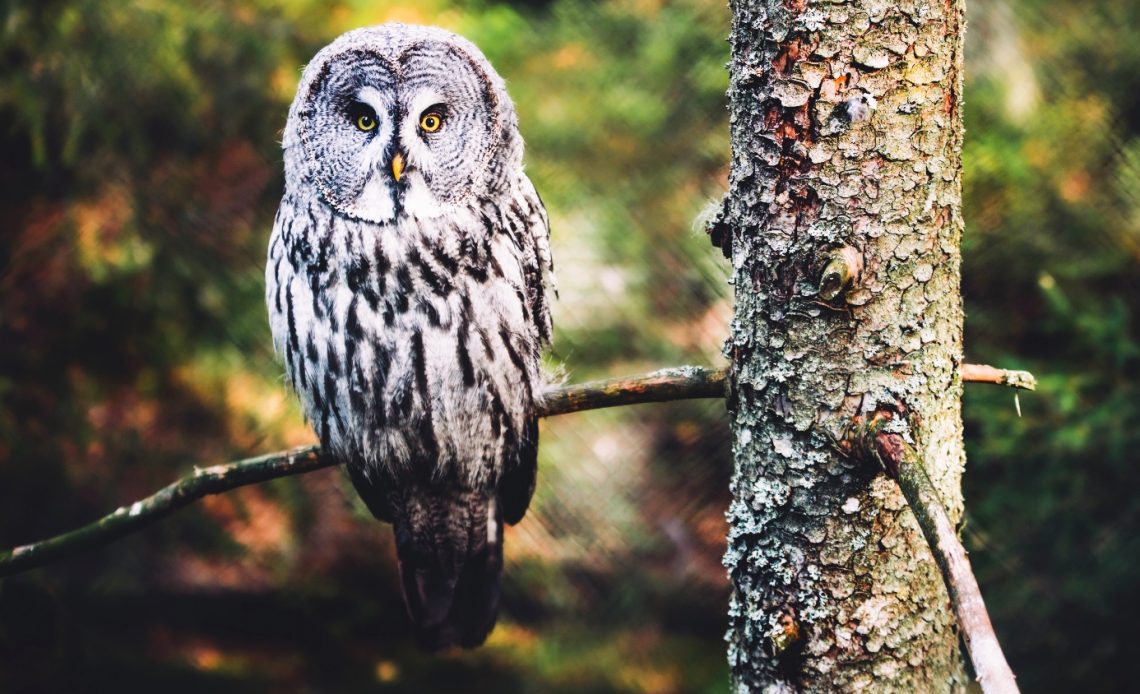

We’re here to help! Wild Yards is a completely free website that is 100% dedicated to helping you create a wildlife-friendly, sustainable yard. Read more
WildYards is reader-supported. When you buy a product through a link on our site, we may earn a comission. Every product is independently selected by our (obsessive) editors and our reviews are unbiased and objective. Read more about our mission or our privacy policy.
We think of owls as being strictly nocturnal, doing all of their hunting when other predators are asleep at night. And in fact, owls typically see better in the dark. Their excellent vision coupled with their acute sense of hearing allows them to track their prey easily, even in pitch-black conditions. But is it possible to see an owl at any other time? Do owls come out during the day?
Yes, owls sometimes come out during the day. Burrowing owls and northern hawk owls are diurnal, but even nocturnal owls, like barred owls, have been spotted in broad daylight. Other owls, like great gray and great horned owls, are crepuscular, preferring to hunt at dawn and dusk.
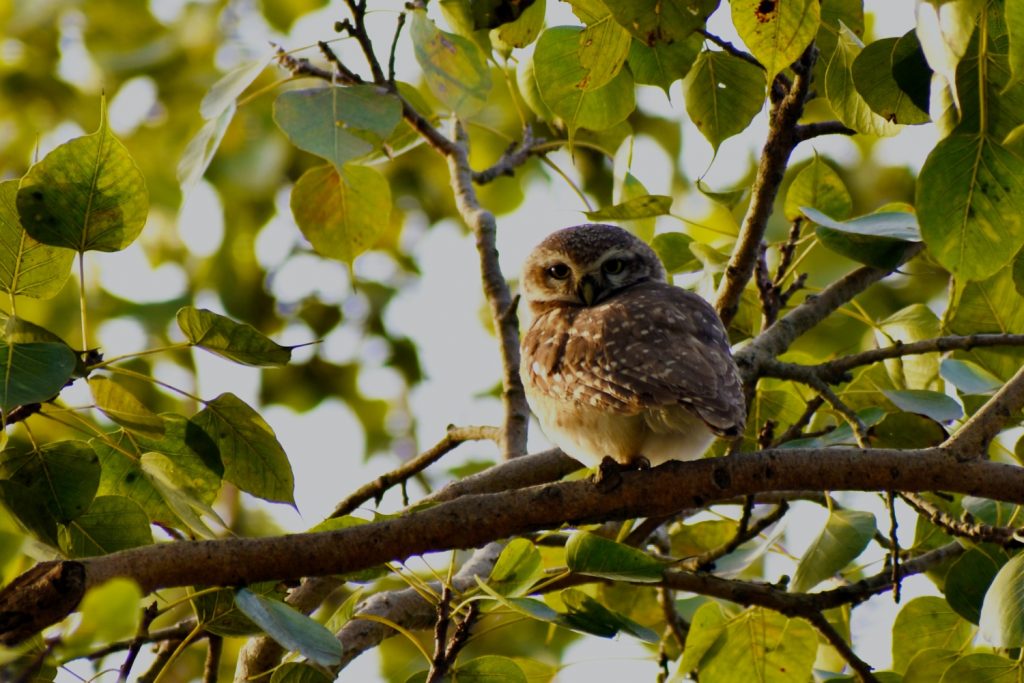
Why do owls come out during the day?
It’s estimated that 70% of owls are nocturnal. Some owls prefer to hunt at night because that’s when the world is quietest. Less noise makes it easier to hear, which in turn makes it easier to track prey. Many owls, including barn owls, northern saw-whet owls, and long-eared owls, have asymmetrical ear openings. This minute detail enables them to locate their prey accurately up to under 5 feet of soil or snow.
Owls that come out during the day simply prefer to hunt during the day. These owls may have better vision than hearing. It’s not uncommon to catch these owls hooting at each other in the daytime, too, especially throughout the breeding season from spring to fall.
It’s also worth mentioning that any owl, even nocturnal ones, can hunt during the day if they get hungry enough. Owls are opportunistic hunters, always on the lookout for easy prey. If they spy a small mammal that they think will make for a quick meal, they won’t hesitate to catch it, even if it is during the daytime.
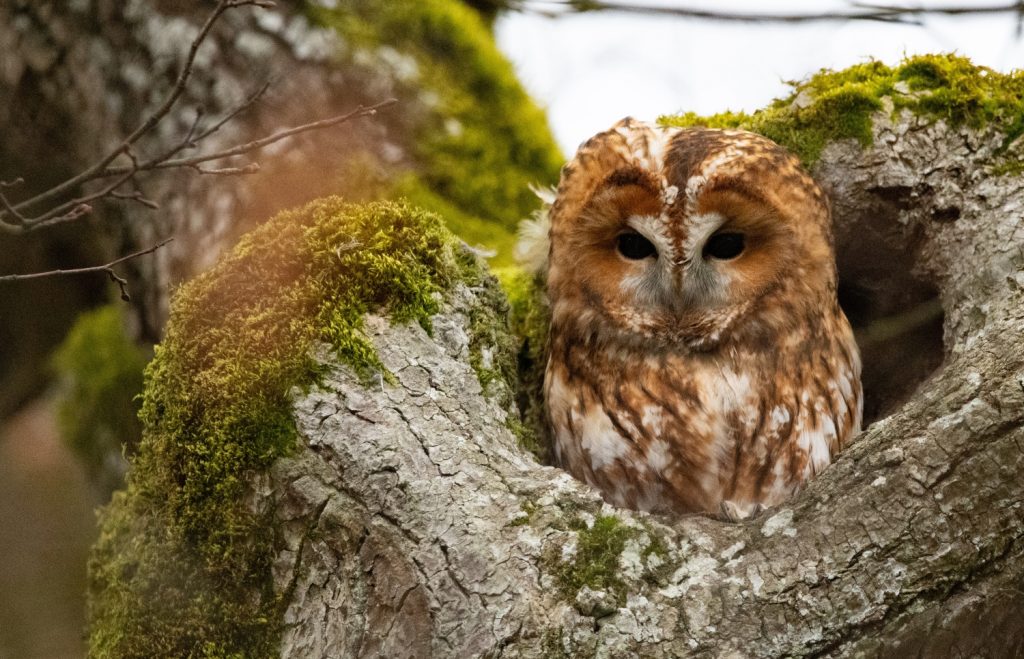
Which owls are diurnal?
Many cultures consider it bad luck to see an owl during the daytime, but as avid birdwatchers ourselves, we couldn’t disagree more! Even though you could see any owl during the day, you’re more likely to see some owls than others. Here are a few owl species that are known to hunt during the day.
Burrowing owls
These long-legged owls with small round heads and stocky, sturdy bodies live in colonies and make their homes in tunnels left behind by ground squirrels and prairie dogs. Burrowing owls are unafraid of people, taking up residence in large grassy areas, including near airports and golf courses. Wide open spaces make hunting easier for these little birds, who may simply run after their prey, rather than fly to catch up with it — although they can do that, too. Burrowing owls will capture small birds and flying bugs right out of the air with their powerful talons.
Burrowing owls are diurnal. They spend their days searching for insects, small snakes, mice, voles, and other rodents. These are some of the smallest owls in America, measuring 9-inches in length at most. They’re also some of the few owls that make efforts to build their roosts, digging their own burrows when none are available and lining them with grasses to insulate them.
These owls spend almost all of their time on the ground. It’s where they seem most comfortable. While it’s not uncommon to catch burrowing owls sitting on low branches and fence posts, they prefer to stay earthbound, running away when frightened or simply flattening themselves to the ground, rather than flying away.
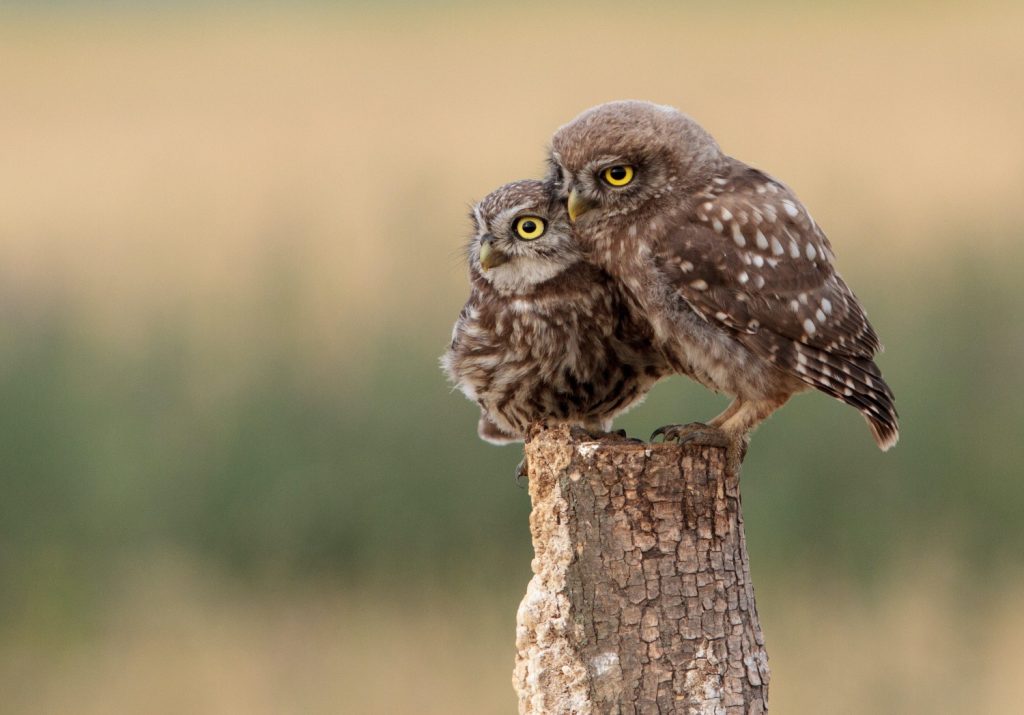
Northern hawk owls
Northern hawk owls hunt almost exclusively during the daytime. Like burrowing owls, they aren’t especially afraid of humans. They won’t fly away when approached by hikers exploring their forest homes. However, because northern hawk owls can be aggressive, you should always exercise caution when you come across one.
These owls hunt more like hawks than owls, sitting high up in the tops of old conifers, surveying the ground below them, and swooping in for a kill when they find the prey they’re looking for. They also search for prey by flying low over the ground, snatching rats, squirrels, small rabbits, and other animals out of the grass with their inescapable claws.
These owls are skilled hunters, regularly feeding on hares, which are roughly the same size they are. When food is abundant, northern hawk owls may cache some of their prey, hiding it in trees or impaling it on thorns and twigs to come back for later.
Northern pygmy owls
Even smaller than the burrowing owl, the northern pygmy owl measures around 6.5-inches and weighs about 2.5 ounces, about as much as two lightbulbs. This owl’s diminutive size enables it to fly effortlessly between the various forest layers. These owls are active hunters, quickly flying from branch to branch in search of prey.
Northern pygmy owls are most active during the daytime, from the early morning to the late evening hours. They feed mostly on insects, birds, and small rodents, but have been known to feed on prey that is the same size, if not larger than, they are, including quail.
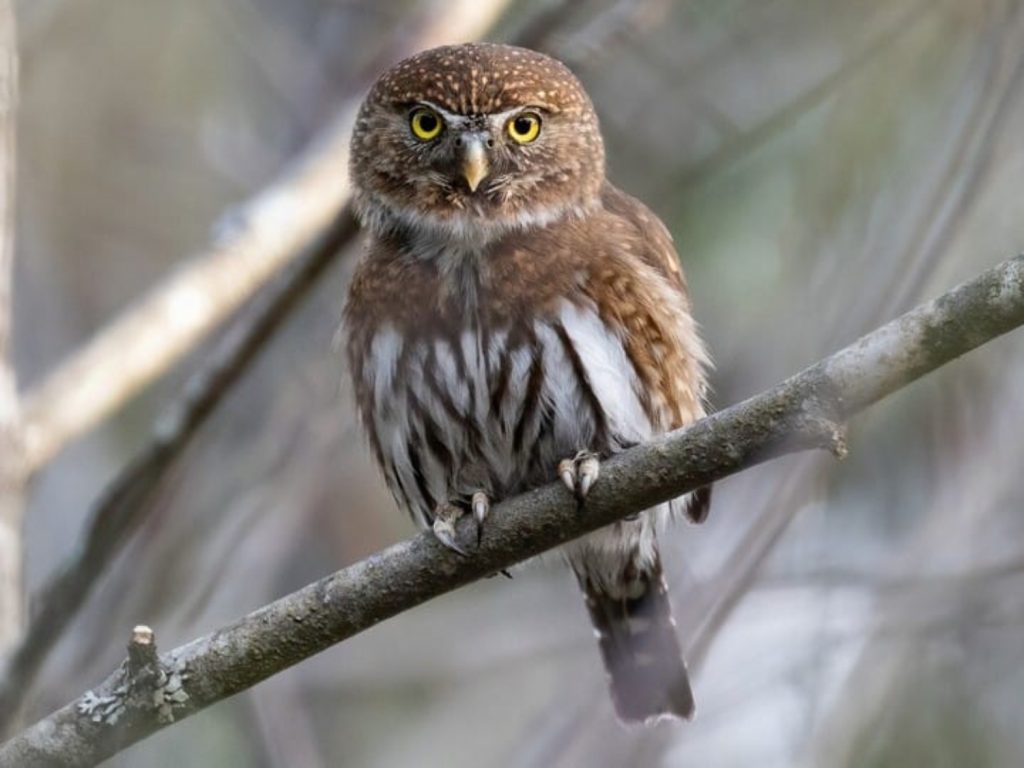
Which owls are nocturnal?
The vast majority of owls are considered to be nocturnal, although this notion is being questioned today as researchers begin to understand more about different owl species’ migration, breeding, and hunting habits. A few of the owls that are known to be nocturnal include:
Barn owl
Some of the easiest owls to identify, barn owls are long, lanky-looking birds with creamy white to tan plumage and ethereal moon-shaped faces. While these owls may be active during the daytime in parts of Europe, here in the U.S., they prefer to do most of their hunting at night.
Barn owls hunt best in dimly-lit locations where it’s nice and quiet. The barn owl locates its prey quickly with its excellent eyesight and unparalleled hearing. Its serrated feathers help disperse turbulence, enabling them to fly silently as they swoop in for the kill.
These owls feed primarily on small rodents, including field mice and rats. Farmers, ranchers, and winegrowers know just how handy these owls are to have around, as they help keep rodents out of crops and livestock feed. Consider installing a barn owl box to bring more of these hunters to your property so you can keep pest levels to a minimum naturally.
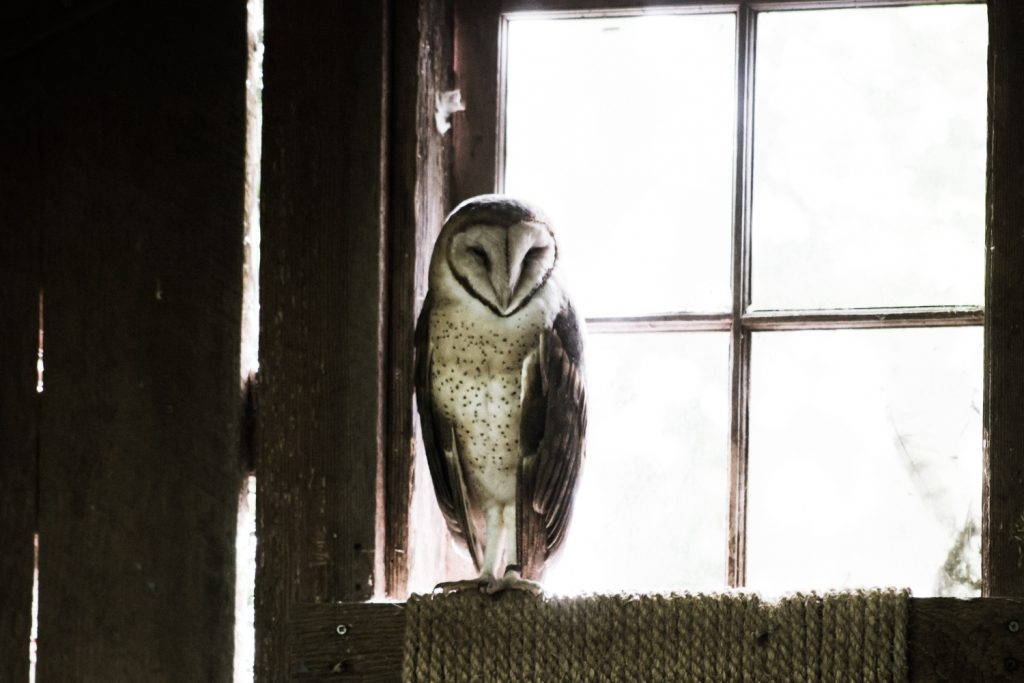
Barred owls
With wise, gentle expressions, barred owls are classic-looking owls with unique “Who cooks for you? Who cooks for you all?” hooting phrases. At 16 to 25 inches, these are large owls with wingspans of 38 to 49 inches. Barred owls live in heavily wooded areas, especially swampy regions, and are most active at night.
These owls enjoy a diverse selection of prey. Like most owls, barred owls feed primarily on rodents, but will also eat amphibians, reptiles, crawdads, and fish. Birds of all sizes, from the tiny hummingbird to the large snow egret, are predated by barred owls as well.
Barred owls are considered invasive in areas where spotted owls also live because they breed more quickly and cause a dramatic decrease in food availability. Researchers have restored to drastic measures, including killing barred owls, just to preserve enough resources for the endangered spotted owl.
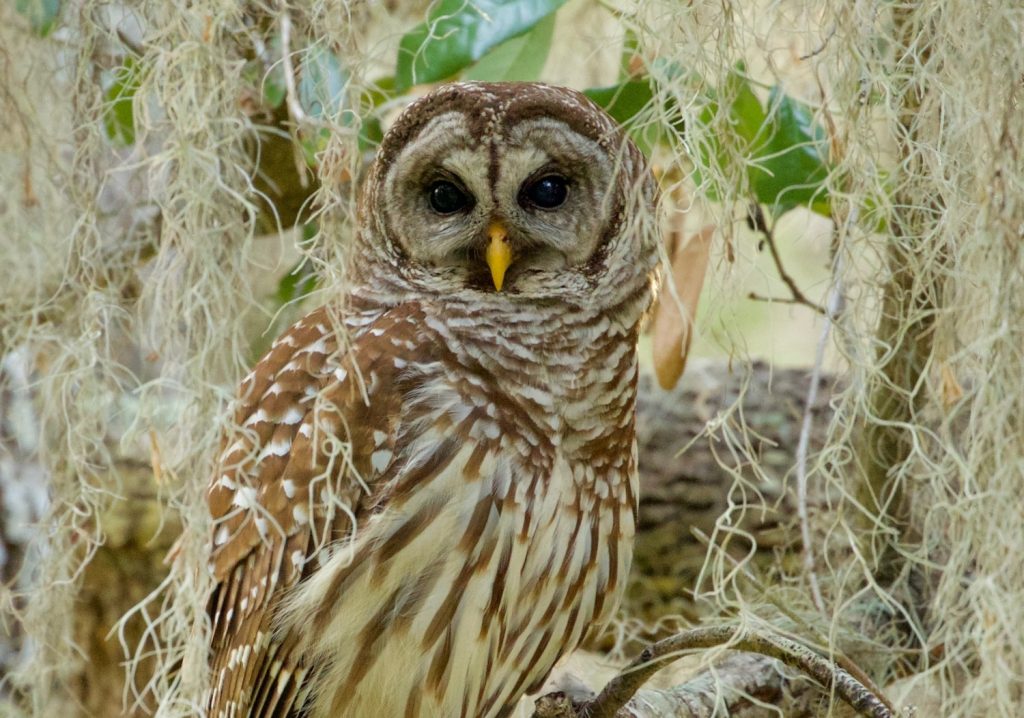
Flammulated owl
Small owls with grey, tan, and orange plumage, named for the distinctive flame-like patternings on their faces, flammulated owls are almost exclusively active at night. These owls have weak feet compared to other owls, making it difficult to grasp large prey. And their relatively poor sense of hearing prevents them from tracking small mammals. So as a result, flammulated owls prefer to prey on insects.
Flammulated owls feed mostly on beetles, moths, and grasshoppers — the larger members of the insect world. Even though insects do not have skeletons as rodents, reptiles, and other typical owl prey do, flammulated owls still regurgitate pellets comprised of chitin, the bony exoskeletons of their buggy prey. Because moths and other nighttime creepy crawlies like to congregate around lights at night, leaving your porch lights on can benefit flammulated owls tremendously.
Spotted owls
Though these owls look a lot like barred owls and share the same habitat, they have a much more restricted diet. While barred owls will eat just about anything, spotted owls prefer to eat small mammals almost exclusively, including squirrels, woodrats, and pocket gophers, although they will prey on amphibians, small birds, and even bats at times.
Spotted owls primarily hunt at night, though they have been seen hunting during the daytime on occasion. It’s less likely that this is proof that they are diurnal and more likely that the individual spotted owls simply woke up hungry and decided to hunt.
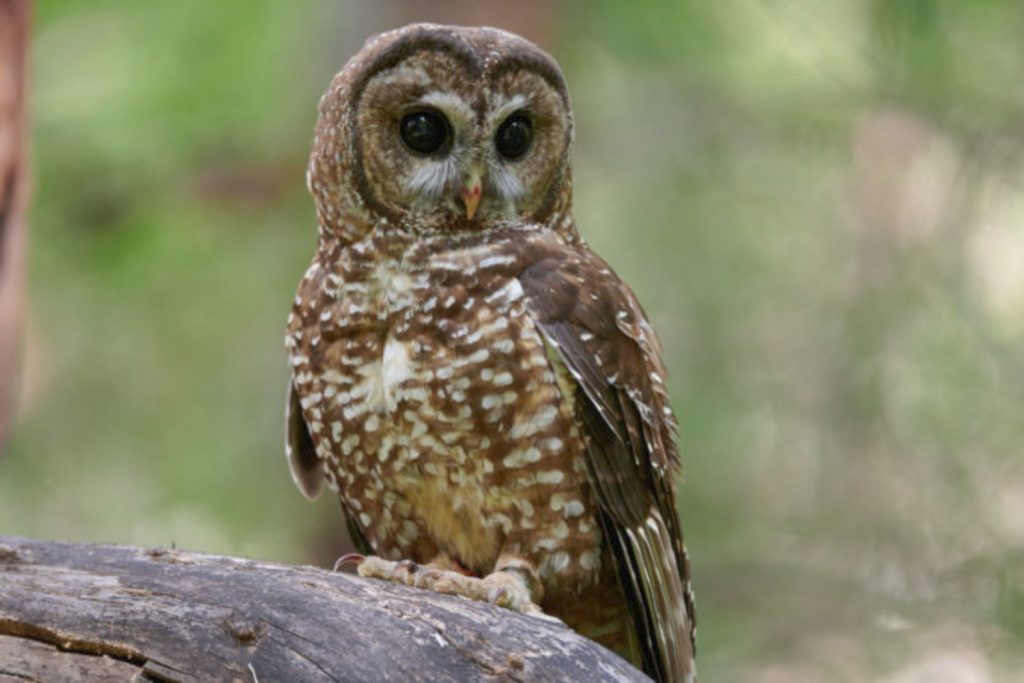
Which owls are crepuscular?
Crepuscular means that an animal is most active during twilight and dusk. Many owls have displayed crepuscular behavior, including the following.
Great gray owls
Some of the biggest owls in the United States, great gray owls have large facial disks that send soundwaves to their ear openings and help them locate prey up to 2 feet underground. Great gray owls are so strong, they can force their way through snow as thick as they are long to capture their prey. These enormous birds do most of their hunting in the morning and evening, and prey on lemmings, shrews, weasels, and birds, including those as large as hawks and ducks.
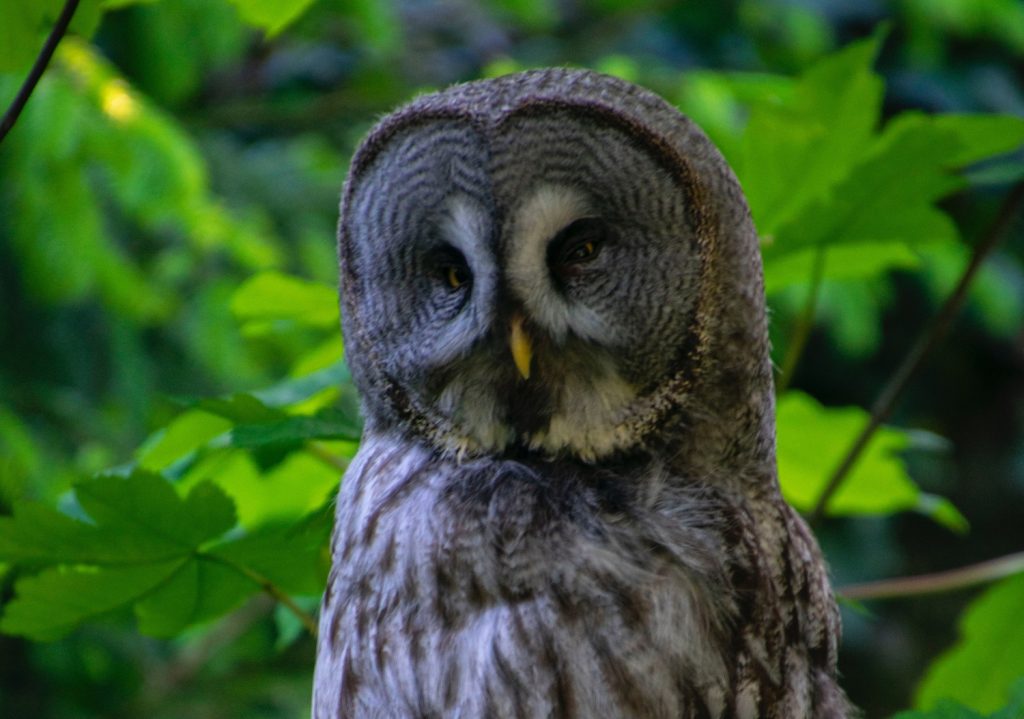
Great horned owls
Another large owl species, the great horned owl also prefers to hunt at dawn and dusk. This is the most widely distributed owl in North America and primarily preys on rodents and small mammals, including rabbits and hares. Great horned owls sit on high perches surveying the ground below for prey, then swoop down and catch it with their incredibly strong feet. The great horned owl’s talons can exert 500 pounds of pressure per square inch, and they’ve been known to attack cats and dogs.
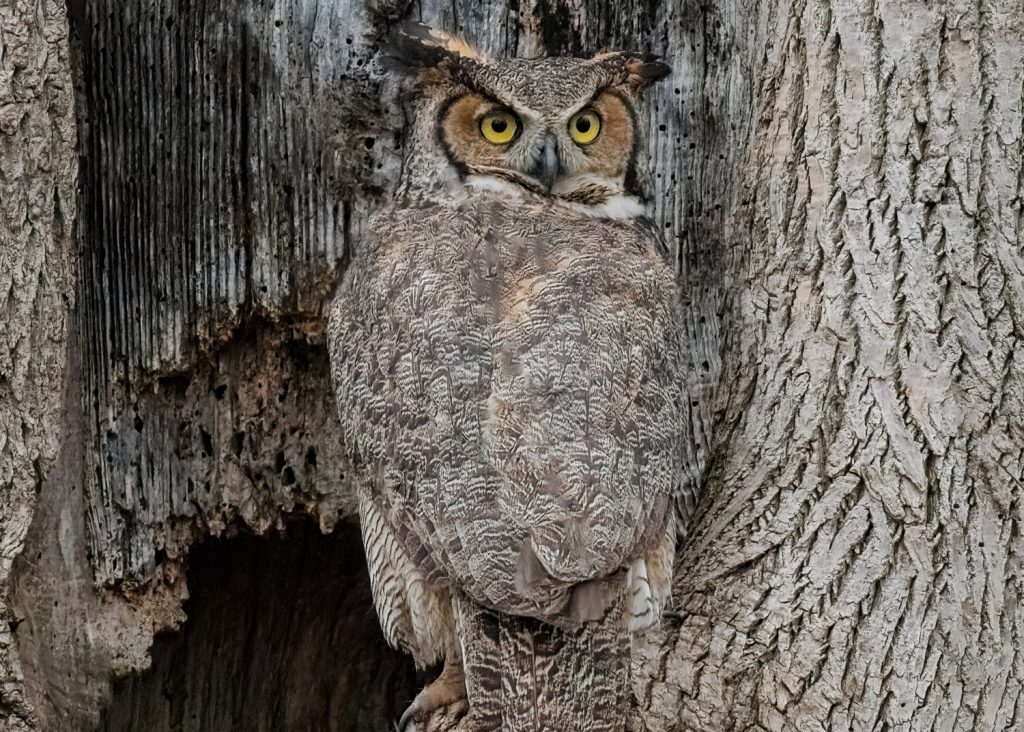
Short-eared owls
The short-eared owl’s “ears” aren’t ears at all, just small tufts of feathers. The bird’s real ear openings are hidden beneath dense plumage and are asymmetrical, allowing them to track prey more efficiently. Short-eared owls are crepuscular and feed on anything from insects to reptiles to small mammals. These owls feed on the same prey as northern harriers, and both birds will harass each other over food.
Does an owl’s eye color determine when it’s most active?
Interestingly, it does! Owls that have dark eyes tend to be most active at night, whereas owls with light-colored eyes tend to hunt during the daytime. You’ll notice that barred owls, spotted owls, and other nocturnal owls have large brown to blue-black eyes. This enables them to hunt their prey in the dark without being seen. Brightly colored eyes would make nocturnal owls easier for prey to spot.
Diurnal owls, like northern hawk owls and northern pygmy owls, have bright yellow eyes. Because they hunt during the day, their eye color won’t make prey aware of their presence. Owls with orange eyes, like the Eurasian eagle owl, are usually crepuscular, hunting during the in-between times, at dawn and dusk.
What’s the best time of day to see an owl?
If you want to see an owl, it’s best to visit a forested area or treeline near sunrise or sunset. Most owls prefer to hunt during these times, regardless of whether they are nocturnal, diurnal, or crepuscular. It’s important to be as quiet as possible when looking for owls, as these birds dislike hunting in noisy locations and will fly away if disturbed. You can try calling in an owl by playing a call on your cellphone.
You can also attract more owls to your property by installing a nesting box. Owls do not build their own nests, so they’re always on the lookout for places to roost. Place your owl box fasting south or east, to keep it out of the wind and toward the sun so it will stay warm.
So, do owls come out during the day? They certainly do! But if the owls in your region are nocturnal, you may have to stay up a little later to catch a glimpse of one of these magnificent birds of prey.
